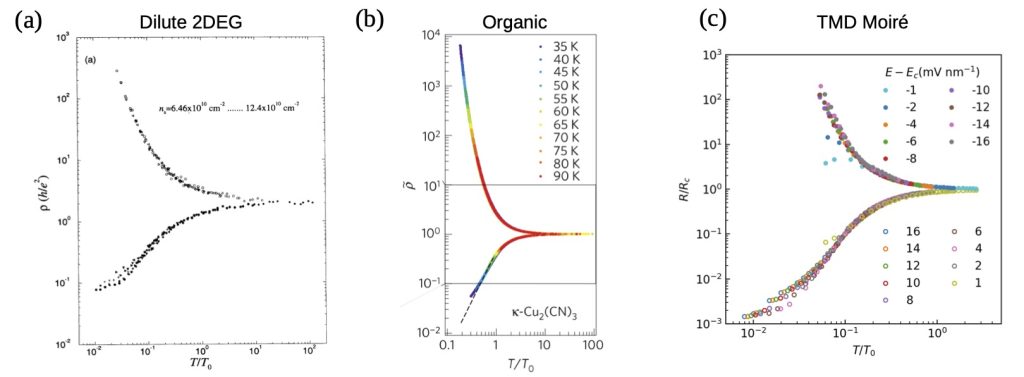How to recognize the universal aspects of Mott criticality?

In our latest paper we compare several examples of two-dimensional electronic systems displaying interaction-driven metal-insulator transitions of the Mott type, including dilute two-dimension electron gases (2DEG) in semiconductors, Mott organic materials, as well as the recently discovered transition-metal dichalcogenide (TMD) moiré bilayers.
The amazing thing is: remarkably similar behavior is found in all these systems, which is starting to paint a robust picture of Mott criticality. Most notable, on the metallic side a resistivity maximum is observed whose temperature scale vanishes at the transition.
In this paper we compare the available experimental data on these systems to three existing theoretical scenarios: spinon theory, Dynamical Mean Field Theory (DMFT) and percolation theory. We show that the DMFT and percolation pictures for Mott criticality can be distinguished by studying the origins of the resistivity maxima using an analysis of the dielectric response.
Published in a special edition of Crystals.
Yuting Tan, Vladimir Dobrosavljevic, Louk Rademaker, How to recognize the universal aspects of Mott criticality?, Crystals 12, 932 (2022)